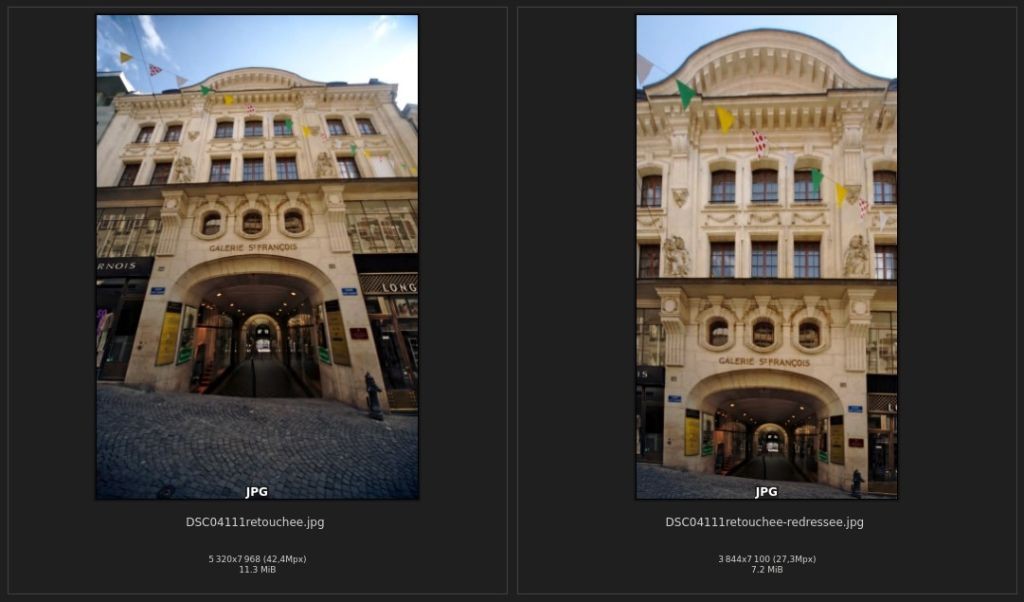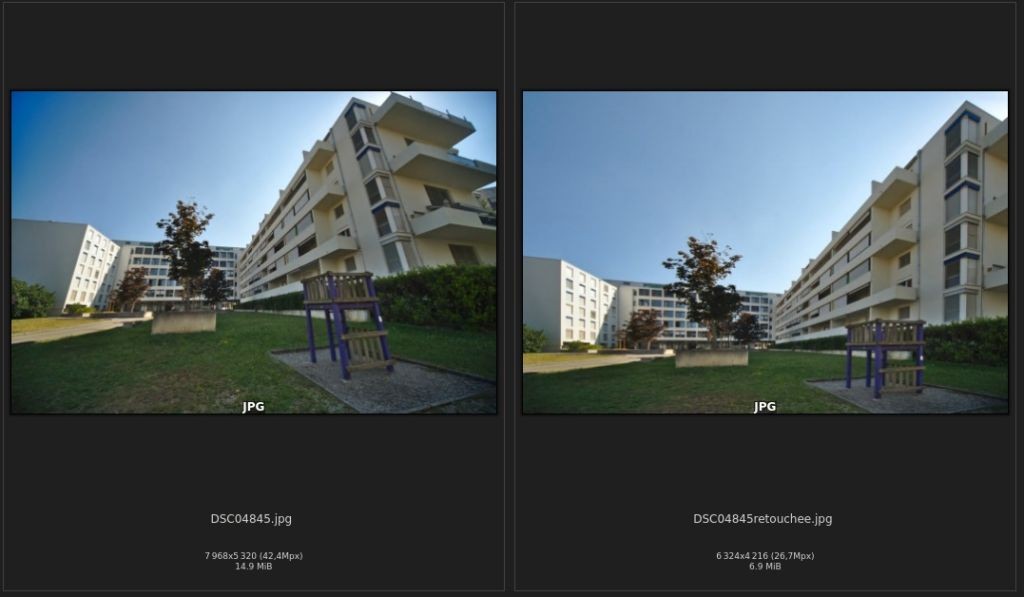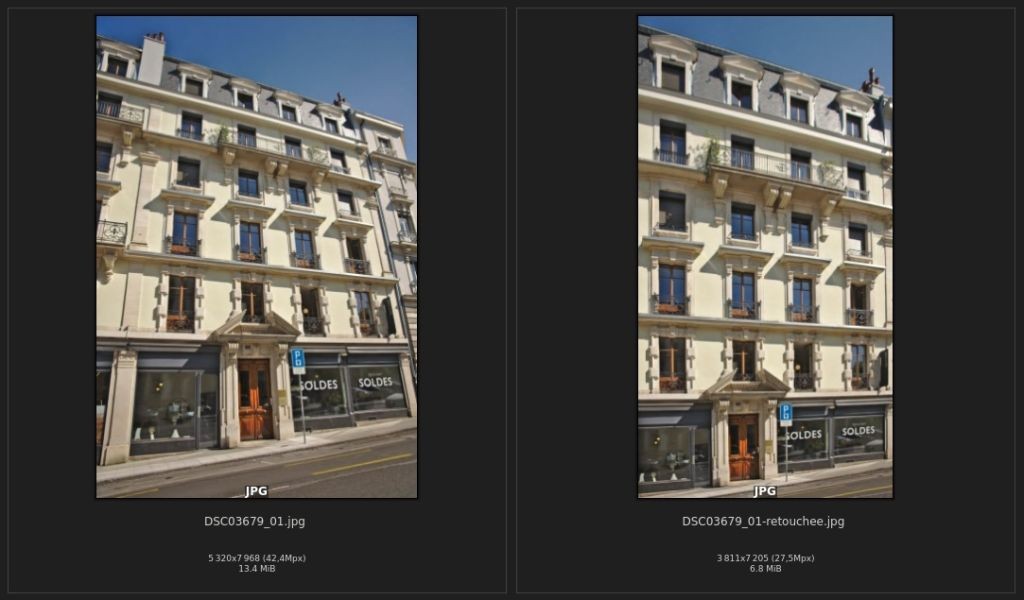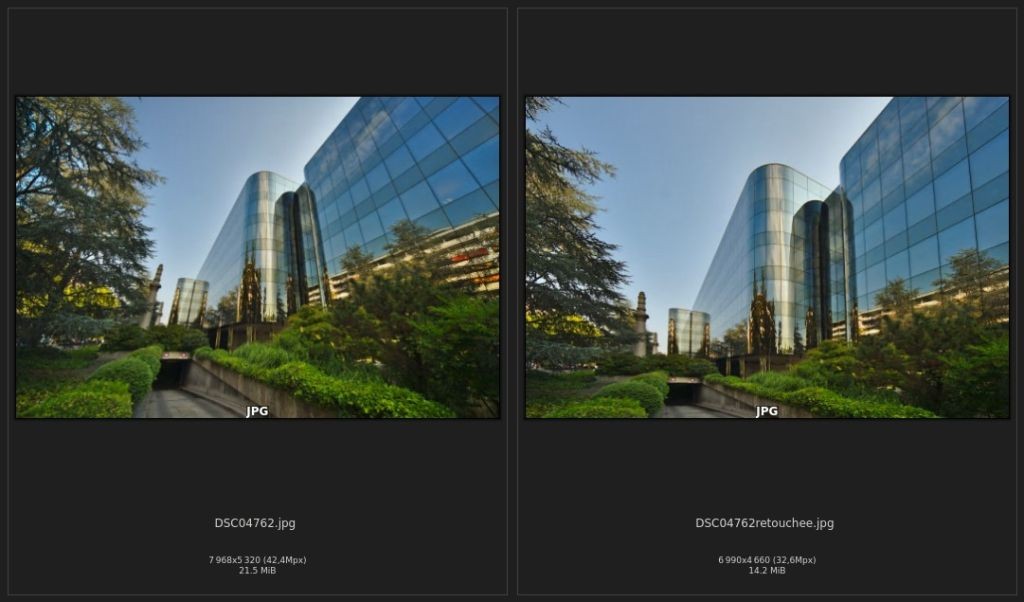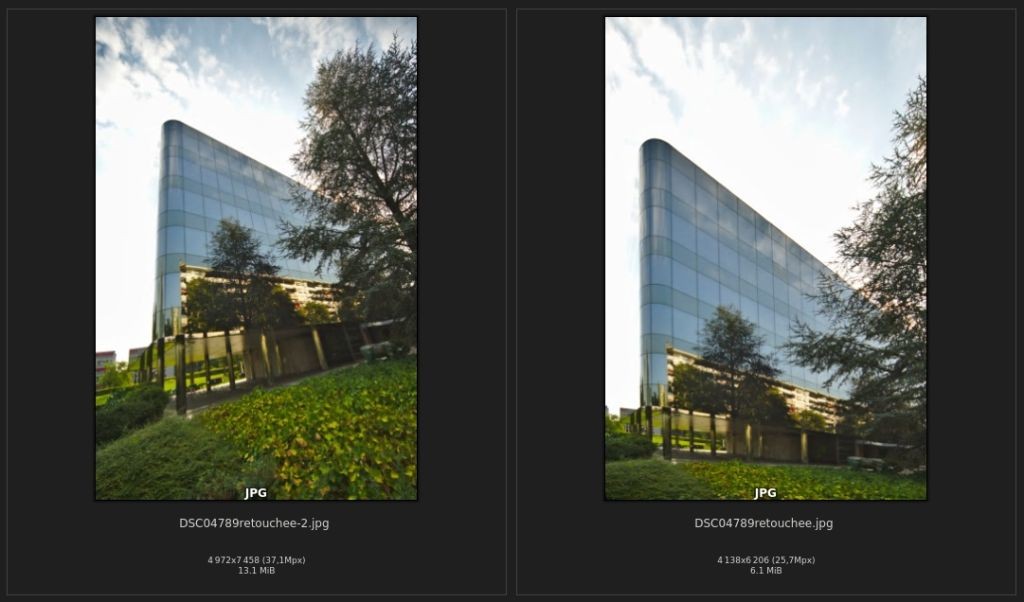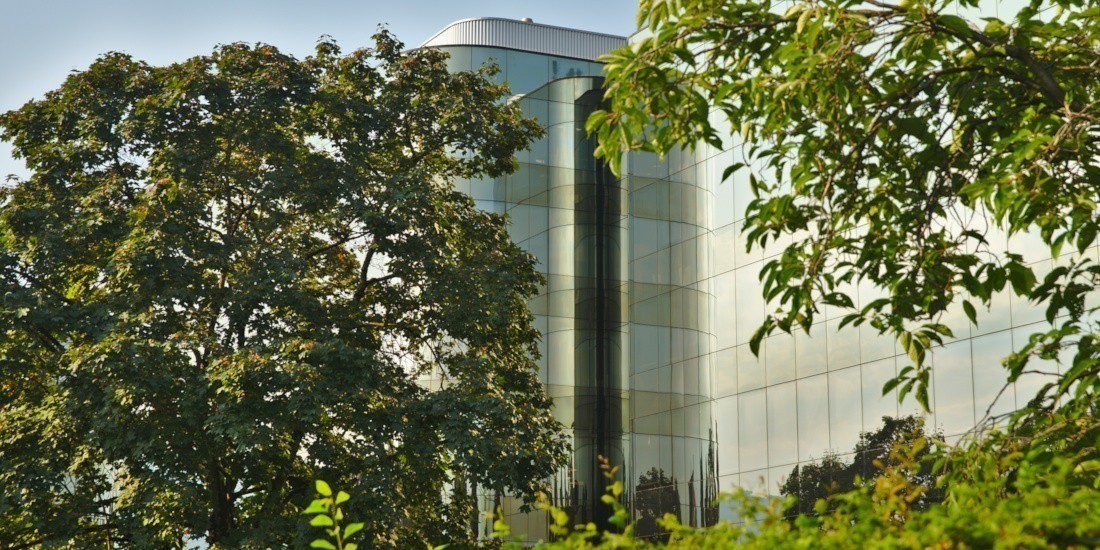Architectural photography may seem innocuous, basic, or simple to do. Don’t be fooled, it’s quite the opposite. Our photographer deals with the environment, nature and the urban spirit. Then comes the time for retouching and editorial preparation. It’s an art that needs to be adapted according to the expected result.
Good weather for architectural photography.
Barring a particular stylistic effect, a photograph of a building will be much less marketable under grey skies. A building with a bit of sunlight, a few shrubs, a hint of nature, a beautiful blue sky, and it’s something else entirely. Also, you have to wait for the right day to make the images. Patience… and perseverance. In the architectural photograph below, a few clouds and their reflections make the tower smoke. Under software, the evening colors are reduced to a slightly cooler midday light. The pillars are upright vertically.
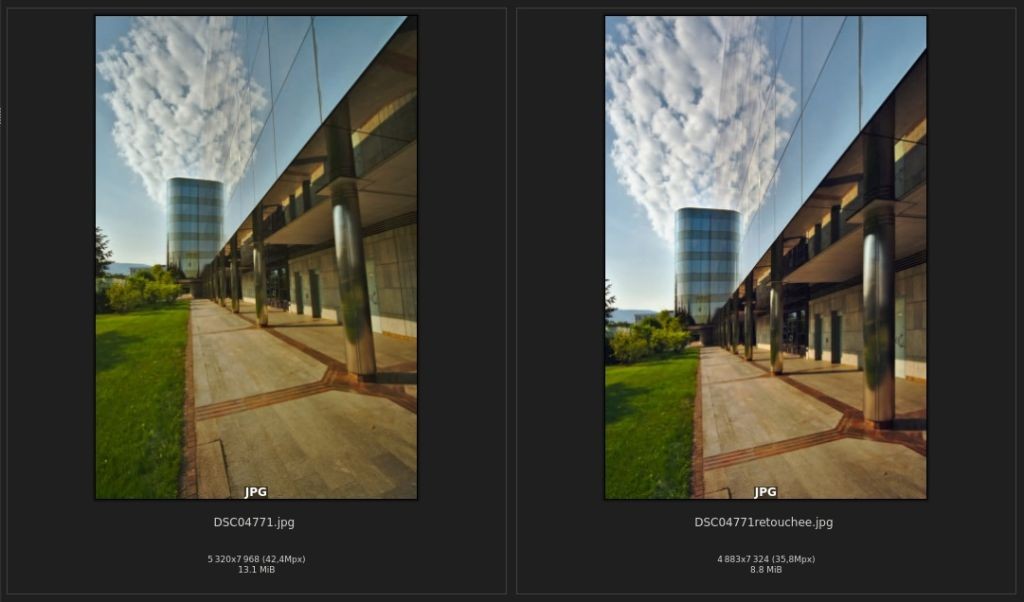
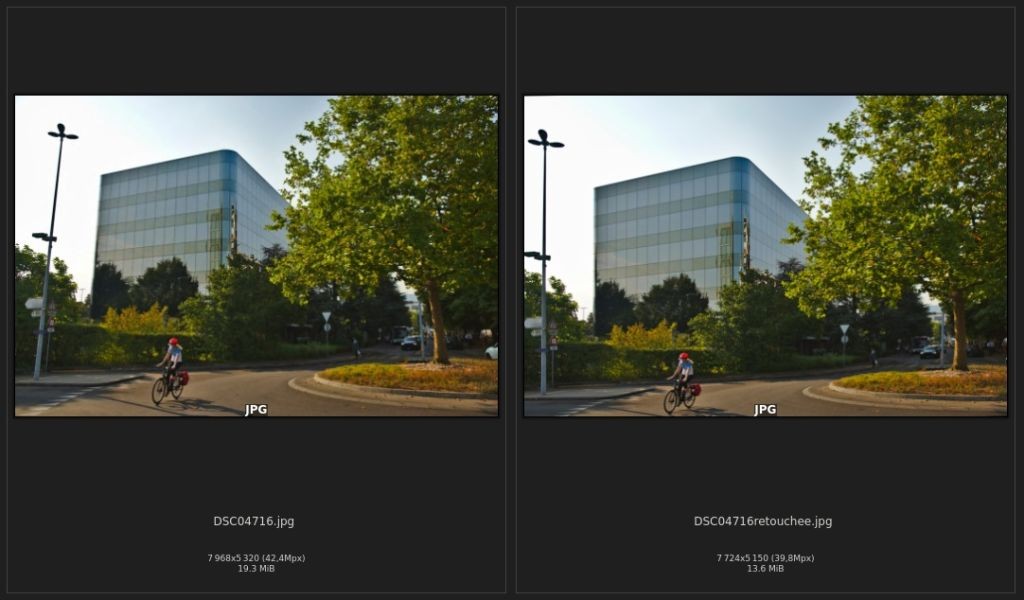
A maximum of distance to play with perspective distortions in architectural photography.
In the city of Geneva or the old town of Geneva with its very narrow streets, it is sometimes very complicated. However, we have our little tricks. Nothing very secret for those who know the profession of photographer:
The association of photographs when there is not the necessary distance from the architecture.
Imagine yourself at the foot of a 6-storey building, with a 3m distance on the building, the width of a pedestrian street. Three times nothing. The top floor is not visible from below. This is an extreme case, but not that rare. By dint of hard work, we will still get a photo of the entire building. Let’s go for a tour of all the floors of the building opposite. One point of view here, another there, and by dint of cleverness with the tenants and the concierge, you get a puzzle to be reassembled on the computer. 3D turnaround, corrected perspectives, and our puzzle takes shape just as well as reality. Another option is to use a mast or drone when tenants don’t open their doors.
A turnaround in the optical and computer perspectives.
How does the photographer manage to make an entire building look upright in a photo, without any distortion of the wide-angle lens? To correct the perspectives of an architectural photograph, the photographer “twists the neck” of his lenses. Don’t imagine that we force anything, we work with a very particular equipment: the camera or the lens with shifting. On a standard camera, the photographic planes are parallel. Imagine moving the angle of these planes, and that straightening the perspectives… That’s the magic of this material. The finishing will be done under computer to correct the small lack of a few degrees. Another option is to use a very high definition camera, with a minimum of 100 MB of pixels, and to correct the entire image on a computer.
